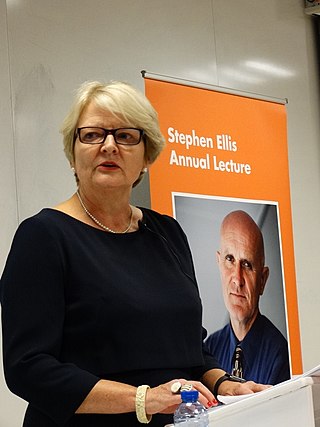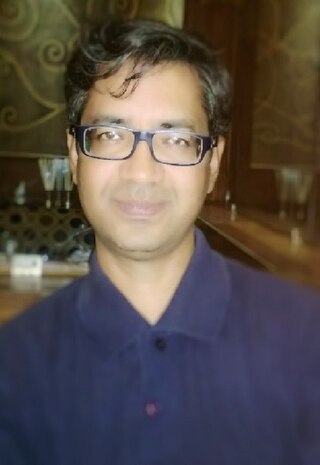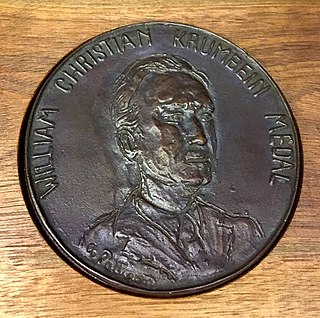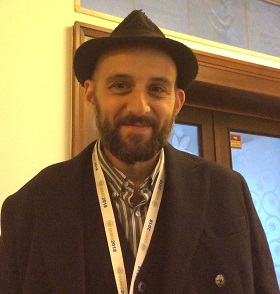Peter Coles is a theoretical cosmologist at Maynooth University. He studies the large scale structure of our Universe.
Michael Patrick Hassell is a British biologist, noted for his work in population ecology, especially in insects. He is a professor at Imperial College London.
Sir Robert Keith O'Nions, is a British scientist and ex-President & Rector of Imperial College London. He is the former Director General of the Research Councils UK as well as Professor of the Physics and Chemistry of Minerals and Head of the Department of Earth Sciences at the University of Oxford.

Dame Henrietta Louise Moore, is a British social anthropologist. She is the director of the UCL Institute for Global Prosperity at University College, London, part of the Bartlett, UCL's Faculty of the Built Environment.

The International Association for Mathematical Geosciences (IAMG) is a nonprofit organization of geoscientists. It aims to promote international cooperation in the application and use of mathematics in geological research and technology. IAMG's activities are to organize meetings, issue of publications on the application of mathematics in the geological sciences, extend cooperation with other organizations professionally concerned with applications of mathematics and statistics to the biological sciences, earth sciences, engineering, environmental sciences, and planetary sciences. IAMG is a not for profit 501(c)(3) organization.
The Georges Matheron Lecture Series is sponsored by the International Association for Mathematical Geosciences (IAMG) to honor the legacy of the French engineer Georges François Paul Marie Matheron, known as the founder of geostatistics and a co-founder of mathematical morphology. The Georges Matheron Lecture is given by a scientist with proven research ability in the field of spatial statistics or mathematical morphology. It is presented annually if an eligible and worthy nominee is found. The first recipient of the award was Jean Serra, for a long time a scientists with the Centre of Mathematical Morphology, Fontainebleau. Serra delivered the first lecture at the IAMG conference in Liège, Belgium in 2006. The IAMG Lectures Committee seeks nominations and makes the selection.

Behara Seshadri Daya Sagar also known as B. S. Daya Sagar is an Indian mathematical geoscientist specializing in mathematical morphology. He is a professor of computer science at the Indian Statistical Institute, Bangalore. He is known as a specialist in mathematical morphology, fractal geometry. chaos theory, and their applications in geophysics, geographical information science, and computational geography. The Indian Geophysical Union awarded him the Krishnan Medal in 2002. He is the first Asian to receive the Georges Matheron Lectureship in 2011. In 2018, he received the IAMG Certificate of Appreciation by the International Association for Mathematical Geosciences for his work on the Handbook of Mathematical Geosciences. In 2020, Sagar was selected as an IEEE Distinguished Lecturer (DL) to represent the IEEE Geoscience and Remote Sensing Society. He, with Frits Agterberg, Qiuming Cheng, and Jennifer McKinley, led the monumental project on the Encyclopedia of Mathematical Geosciences to the completion. The first edition of two-volume 1756-page Encyclopedia of Mathematical Geosciences was published on 21 June 2023 by Springer International Publishers.

The William Christian Krumbein Medal is the highest award given alternate years by the International Association for Mathematical Geosciences (IAMG) to senior scientists for career achievement, which includes (a) distinction in application of mathematics or informatics in the earth sciences, (b) service to the IAMG, and (c) support to professions involved in the earth sciences. There is no stipulated preference for fields of application within the earth sciences. The William Christian Krumbein Medal, named after William Christian Krumbein, was established in 1976.
The IAMG Distinguished Lectureship is a special lecture series established in the year 2002 by the International Association for Mathematical Geosciences (IAMG). Each year IAMG selects IAMG Distinguished Lecturer, who is an outstanding individual with (i) demonstrated ability to communicate mathematical concepts to general geological audience, (ii) a clear enthusiasm for mathematical geology, (iii) recognition fork in their field, and (iv) established skill in working with individuals and in group discussions on geological problems. The selected IAMG Distinguished Lecturer must be ready to travel and to (i) Prepare and present a lecture suitable for a general geological audience, (ii) Prepare and present one or two lectures on a more specialized topic, and Interact and hold discussions with individuals, both professionals and students, on applications of mathematical geology to local problems of interest.

John H (Jack) Schuenemeyer is President of Southwest Statistical Consulting, Cortez, Colorado. He is also Professor Emeritus of Statistics, Geology, and Geography, University of Delaware. Schuenemeyer was elected as a Fellow of the American Statistical Association in 1991. International Association for Mathematical Geosciences has awarded him the IAMG Distinguished Lectureship in 2012. In 2004, he was awarded John Cedric Griffiths Teaching Award by the International Association for Mathematical Geosciences.

Vera Pawlowsky-Glahn is a Spanish-German mathematician. From 2000 till 2018, she was a full-time professor at the University of Girona, Spain in the Department of Computer Science, Applied Mathematics, and Statistics. Since 2018 she is emeritus professor at the same university. She was previously an associate professor at Technology University in Barcelona from 1986 to 2000. Her main areas of research interest include statistical analysis of compositional data, algebraic-geometric approach to statistical inference, and spatial cluster analysis. She was the president of the International Association for Mathematical Geosciences (IAMG) during 2008–2012. IAMG awarded her the William Christian Krumbein Medal in 2006 and the John Cedric Griffiths Teaching Award in 2008. In 2007, she was selected IAMG Distinguished Lecturer.
During the 6th International Workshop on Compositional Data Analysis in June 2015, Vera was appointed president of a commission to formalize the creation of an international organization of scientists interested in the advancement and application of compositional data modeling.
Daniel Francis Merriam was an American geologist best known for fostering the development of quantitative modeling in geology after the advent of digital computers. He first joined the Kansas Geological Survey in 1953, initially working under the direction Raymond C. Moore to have a more accurate knowledge about the geology of the state. His fascination with the new possibilities offered by computers started ten years later while working with John W. Harbaugh at Stanford University as Visiting Research Scientist. In the following seven years, he was active organizing colloquia and as editor of the Computer Contributions, who saw 50 publications in the series by pioneers in the new field. Merriam accepted the position of Chairman of the Department of Geology at Syracuse University in 1971 and moved to the same position at Wichita State University in 1981, coming back to the Kansas Geological Survey in 1991 to retire in 1997, remaining as an Emeritus Scientist.

Jef Caers, born in Belgium, is an academic working as a Professor at the School of Earth, Energy & Environmental Sciences, Stanford University. He was awarded the Andrei Borisovich Vistelius Research Award and the William Christian Krumbein Medal by the International Association for Mathematical Geosciences in 2001 and 2014 respectively. He is Editor-in-Chief of Computers & Geosciences.
Graeme Bonham-Carter is a UK-born Canadian mathematical geologist. He served as president of the International Association for Mathematical Geosciences (IAMG) from 2000 to 2004. He was Editor-in-Chief of the journal Computers & Geosciences from 1996 to 2005. He received the William Christian Krumbein Medal in 1998 from the IAMG.

Raimon Tolosana-Delgado is currently working at Helmholtz-Institut Freiberg für Ressourcentechnologie, Germany. Tolosana-Delgado received the Felix Chayes Prize in 2013, and the Andrei Borisovich Vistelius Research Award in 2007, from the International Association for Mathematical Geosciences. He is an elected Executive Vice President of the International Association for Mathematical Geosciences

Edward Philip Frank "Ted" Rose is an English palaeontologist and geologist, best known as a historian of military aspects of geology.

Hans Thybo is a Danish geophysicist and geologist. He is President of International Lithosphere Program since 2017 and currently employed by the Chinese Academy of Geological Sciences (CAGS).

Xiaogang Ma or Marshall Ma is a data science and geoinformatics researcher at the University of Idaho (UI), United States. He is an associate professor in the department of computer science at UI, and also affiliates with the department of earth and spatial sciences and several research institutes and centers at the university.
Walther Schwarzacher was an Austrian geologist best known for his research in quantitative stratigraphy. He was a Corresponding Member of the Division of Mathematics and the Natural Sciences of the Austrian Academy of Sciences and the second recipient of the William Christian Krumbein Medal, the highest award of the International Association for Mathematical Geosciences (IAMG).











